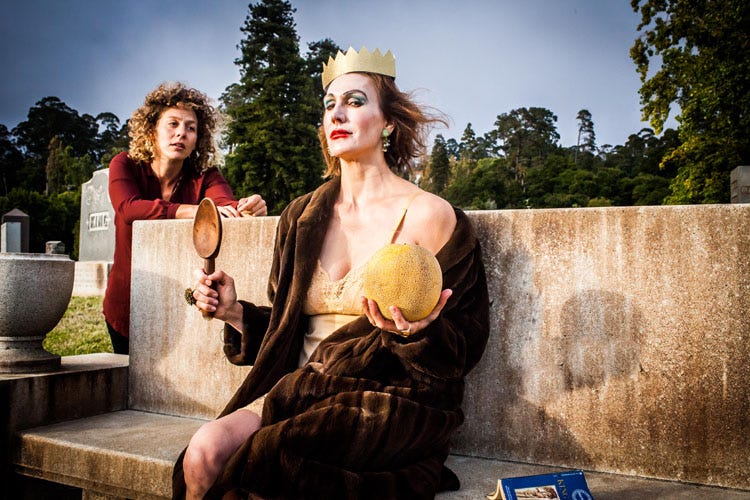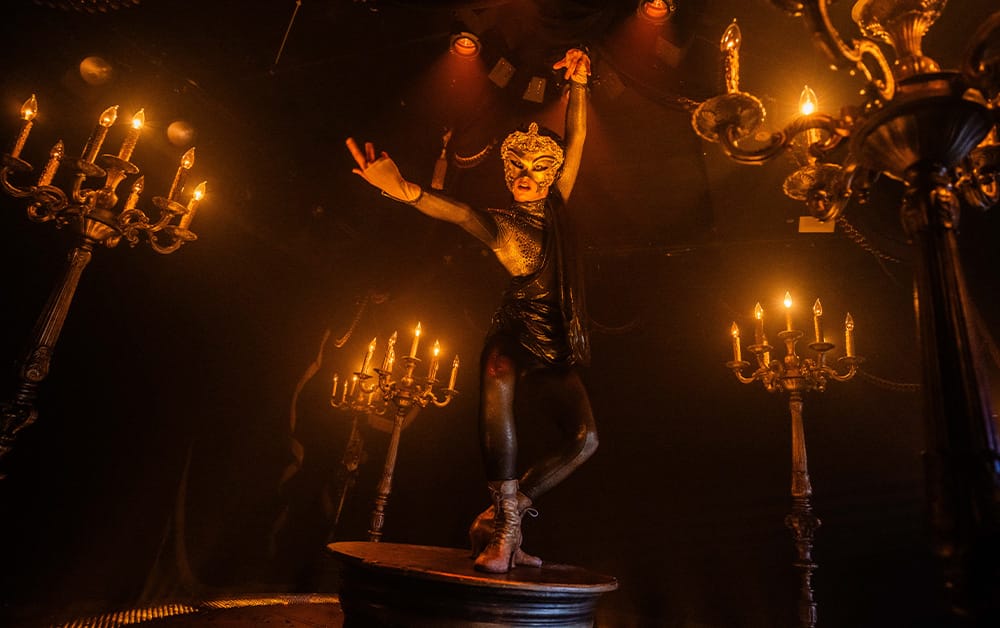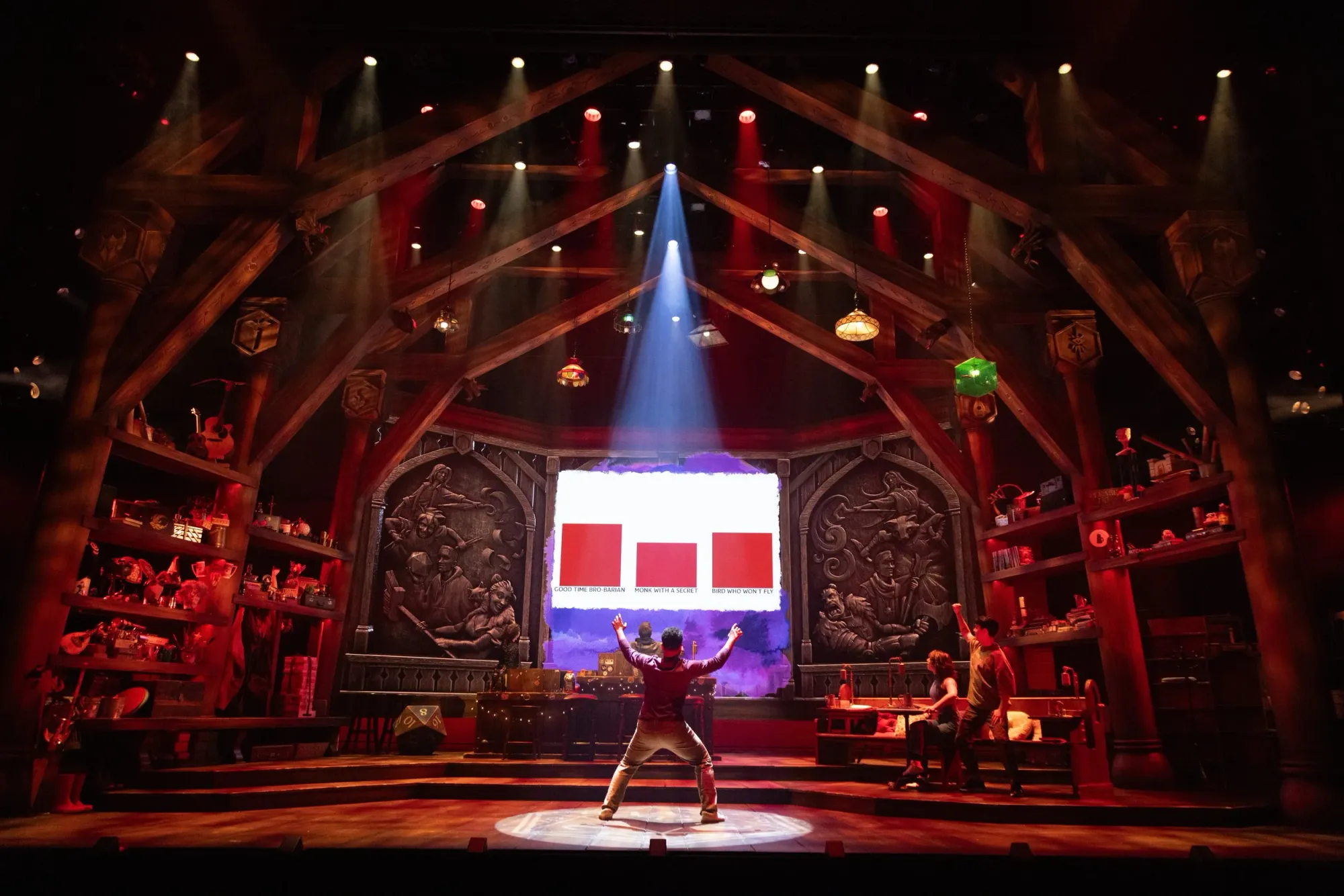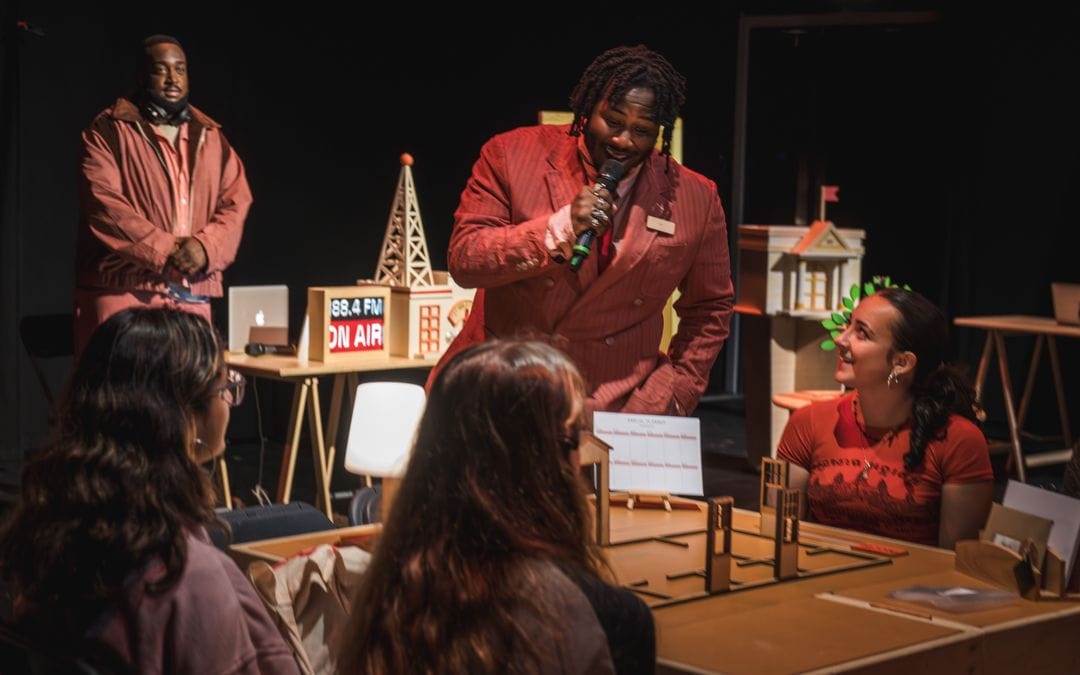
The Founding Artist Director speaks about their 18 years of work
We Players creates site-integrated performances that transform public spaces in the San Francisco Bay Area and has been doing so since 2000. That is to say: they’ve been at this site-specific and interactive theatre game for a long time, since Ava was a student at Stanford University (and where, in full disclosure, we briefly shared the same dorm). The company has garnered nationwide praise for their innovative approach to bringing Shakespeare’s classics to life in state and national parks such as Golden Gate Park, Alcatraz Island, and The Palace of Fine Arts.
In between performing in a restaging of their hit version of King Lear and preparing for their newest show (a circus-and-opera infused adaptation of Shakespeare’s Julius Caesar), we caught up with Founding Artistic Director Ava Roy over email and asked her our Immersive 5 questions.
This interview has been lightly edited for clarity.
No Proscenium (NP): What does “immersive” mean to you?
Ava Roy (AR): Complete saturation within an experience…fully embracing both the challenges and rewards — of the environment, the weather, the time and location, and the people present. Full sensory engagement, awakening the sensory pores, action happening in multiple directions, on multiple levels — literal and figurative…a richly-layered experience.

NP: Why (or why don’t) you think of your work as immersive?
AR: I think most theatre strives to be immersive in some way or other — if only by engaging the audience through compelling execution. Profound engagement requires connecting with an audience member’s heart, intellect, and physical/sensory self. Arguably anything that effectively does this is “immersive” — you are immersed into the experience, you lose the normal, the every day, and you are instead submerged into a concentrated experience that heightens your awareness.
That said, for me, integration into a specific site, a particular environment, is fundamental to the immersive element of We Players’ work. Our performances demand the audience physically move their bodies through a landscape, connecting with their senses and expanding their perception through the use of depth of field and with action happening throughout the larger performance environment. I use the term “site integrated.”

NP: What was the moment where you knew that this kind of work was for you?
AR: I was very young when I starting staging large scale, site-specific works in massive outdoor environments. First with two gangs of imaginary friends. It got more exciting and more complicated when I started working with real people.
I was 13 when I started working with Shakespeare. It was clear from that moment forward that I would spend the rest of my life engaged with Shakespeare. I grew up with a lot of open space and historic buildings. The connection between the two was a natural development for me. Working outdoors — often in extreme elements, with the forces of nature powerfully present — provides a powerful container for the intensity of Shakespeare’s verse and supports the emotional extremity of his characters.
Being challenged by the elements’ gifts gives both actor and audience greater access to a more profound experience and depth of feeling. When there are factors that can’t be controlled or planned for, it creates this sort of ‘crucible’ for magical moments. When the whales breach off-stage, or a massive migration of pelicans flies overhead, or the sunset is setting the sky ablaze at the end of a performance, or a white owl soars through a scene — these moments highlight the potential for surprise and discovery in each moment.
These moments also remind the audience that this is really happening right here right now; this is a precious unrepeatable event.

NP: When designing — regarding your approach to presence, agency, safety, and consent — how do you cue the audience as to what’s expected of them and the nature of the content they might encounter?
AR: I try not to expect anything specific of the audience, just as I manage my expectations from the weather and the natural surroundings. These unknowns are essential to making the work interesting and dynamic each time. Of course, I expect the audience to be present — we’re very explicit in our pre-show emails about how to prepare to be comfortable and focused throughout the piece — but we really don’t ask much in terms of how they must interact.
Instead, we encourage a heightened awareness of surroundings: looking behind, above, and in the distance. Sometimes there are very direct modes of engagement, and sometimes quite intimate…this is either asked of the entire audience at once, as a group (e.g.: packing into the sally port of a civil war fortress, shoulder to shoulder, in physical contact with one another), or sometimes (more often) options are provided and an audience member can choose her level of engagement (e.g.: you meet Zeus at a cross roads, you can give your pack to another audience member and run with Odysseus’ son Telemachus through an obstacle course, or you can hike up a hill and watch the race and cheer on the participants, or you can take the gentle down hill walk to a temple protected by singing nymphs. You choose.).

NP: What works — be they creative works, books, or other inspirations — have shaped your current work?
AR: My primary inspiration for each project is informed by the site itself: the natural landscape, its contours and topography and weather patterns; the architecture of the site; the history of the place and what themes weave through the layers of history of that site; the social and/or political and/or environmental sensitivities of the site. All these elements influence the concept and design as well as the adaptation and telling of the story.
As far as other artistic forms: music. Music gets into the body, into the bones, it’s vibration, it can be profoundly evocative. I use live music in all of my productions — it’s often central to the creative process of the piece, informing important conceptual (as well as practical) decisions.
And ballet. The confluence of discipline and artistry, rigor and devotion, specificity and fluidity, music in motion is continually inspiring to me…and aspirational. I am compelled by the apparent simplicity and ease achieved by such discipline and precision. In my own practice, I also strive for intense specificity with a quality of ease.
We Players’ Caesar Maximus runs August 16 — September 30 at the Music Concourse in Golden Gate Park in San Francisco. Tickets are $35–80.
View all of our Immersive 5 Interviews.
NoPro is a labor of love made possible by:

…and our generous Patreon backers: join them today!
In addition to the No Proscenium web site, our podcast, and our newsletters, you can find NoPro on Twitter, Facebook, YouTube, Instagram, in our Facebook community Everything Immersive, and on our Slack forum.



















Discussion